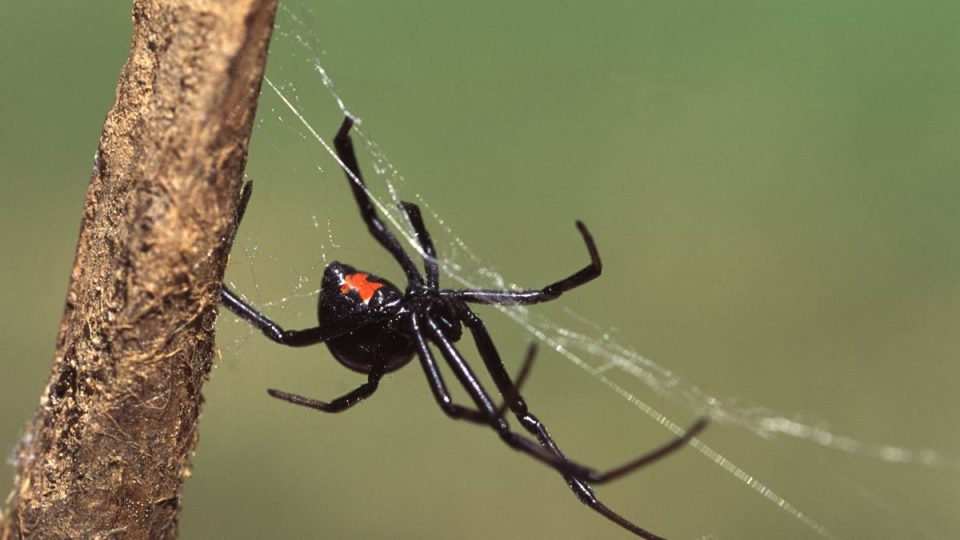It is that time of year again, and for people living in Longview, fall brings more than just cool weather and some leaves changing colors. With the seasonal yard cleanup underway across East Texas, a lot of residents are finding unwanted guests in their accumulated outdoor debris.
Across the city, in 81,638 homes, black widow spiders have nestled right into homes in which garden tools have been left to rust, firewood stacked beside the house, and storage areas have been ignored. Cluttered yards and good fall conditions are encouraging abundant black widow populations around Longview neighborhoods.
Looking for pest control in Longview? Make sure to click on the link and speak to an expert!
Why Black Widow Spiders Rise In Longview During Fall?
The black widow is recognized more during the autumn months, and East Texas sees spikes in identifications during the fall. Longview gets high marks on spider sightings. Black widow spiders are out during this time of the year, but you might not see one in a backyard with fewer outdoor activities.
Widow spider venom is up to 15 times more toxic than rattlesnake venom, making them a bigger fall concern for residents of Longview, according to new research linked to the article. These spiders prefer the undisturbed places where they can do their web-building without hindrance.
What Attracts Them to Your Yard?
-
Cluttered Storage Areas
Black widows prefer undisturbed locations to spin webs. They can find perfect nesting spots in garden sheds, storage bins, and forgotten garage corners. The black widow ingesting areas in these spaces tend to house insects, which means it is an all-in-one environment.
-
Woodpiles and Lumber Stacks
Black widows particularly favor stacked firewood and construction materials. The spaces between the logs provide a home for them, but attract other insects that are eaten. A fair number of Longview people getting ready to heat their summer homes this winter are essentially messing with spider colonies in their stacks of wood.
-
Outdoor Furniture and Equipment
Black widows will quickly move into patio furniture, grills, and lawn equipment left unused for weeks. For the most part, the black widow spiders are nocturnal. They are often found hidden in unused areas in buildings and other dark niches and crevices. We keep them protected and close to meals under chairs, tables, and equipment.
-
Overgrown Vegetation
Black widow spiders take cover inside dense shrubs, tall grass, and neglected gardens. These attract the flying bugs they primarily eat, creating natural hunting grounds near the foundations of your home.
-
Water Sources and Damp Areas
Black widows also require moisture for survival, so the area near leaky hoses, air conditioning units, and irrigation systems becomes an enticing nesting ground. Sub-optimal drainage spots and perpetually damp soil create micro-local climates, ideal for these deadly arachnids.
How to Protect Your Yard From Black Widow Spiders?
-
Regular Yard Maintenance
Black widows thrive in cluttered conditions, which is why consistent cleaning and organizing will get rid of them quickly and easily. Clear debris, cut back overgrown plants, and keep sight lines clear from around the property. Cleaning the yard weekly removes a number of hiding places and makes it easier to see spider activity before an infestation forms.
-
Lighting and Visibility Improvements
Provide enough outdoor lighting to get rid of shady spots for black widows to thrive. Put motion-activated lights around your storage areas and entry points, as they can also make it easier for you to see any of the spiders at night. In addition, well-lit areas reduce the insect populations that black widow spiders are attracted to.
-
Professional Inspection Services
Professionals, such as Pointe Pest Control, specialize in detecting and exterminating black widow infestations all over Longview. They perform detailed property inspections to find any existing spider presence and devise targeted treatment plans.
-
Structural Modifications
Seal cracks and crevices around the foundation, windows, and doors of your home to keep spiders out. Use fine mesh screens over vents and other openings.

